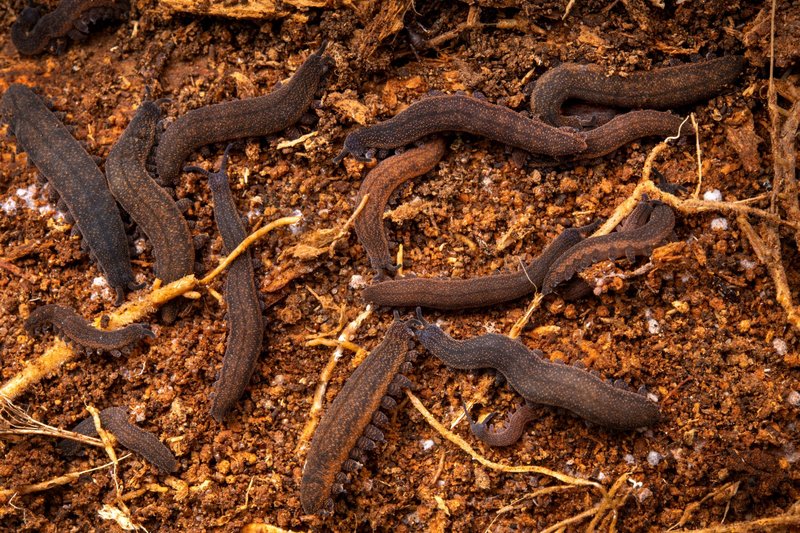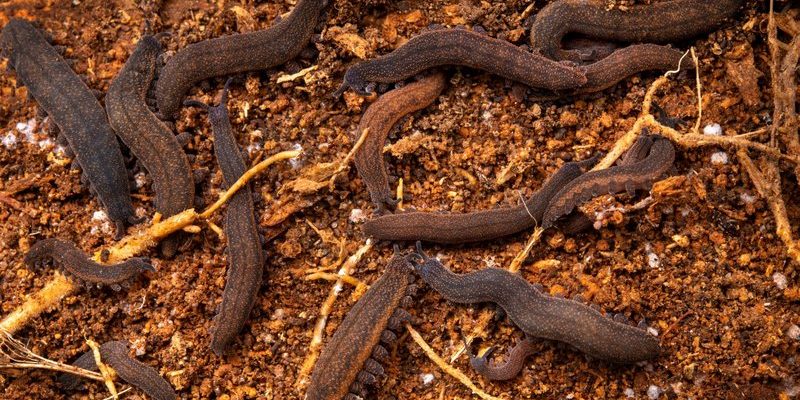
Imagine you’re in a dense, lush forest where the air is rich with the scent of damp earth and vegetation. Beneath the leaf litter, you might stumble upon a velvet worm, a slippery, soft-bodied creature with a surprising mix of features. Not quite a worm, these ancient animals are more closely related to insects. Their method of reproduction can vary, and understanding this can give us insight into the diversity of life on our planet.
So, whether you’re simply curious or keen to learn how these fascinating organisms ensure their species continues, let’s explore the world of velvet worm reproduction together!
What Are Velvet Worms?
Before diving into their reproduction, it’s helpful to know what velvet worms actually are. Velvet worms, belonging to the phylum Onychophora, are often described as living fossils. They have existed for millions of years and maintain some primitive traits that connect them to both arthropods and annelids.
These fascinating creatures are known for their soft bodies, covered in a velvety texture, and possess paired, leg-like appendages that help them move through their damp habitats. Found mainly in tropical and subtropical regions, velvet worms thrive in humid environments, often spotted in rainforests or under rotting logs.
Key Features of Velvet Worms:
- Soft, velvety bodies
- Paired leg-like appendages
- Ancient lineage, linking them to early arthropods
Velvet worms primarily feed on small invertebrates. Using slime to capture their prey, they exhibit some pretty unique hunting techniques. This adaptability showcases their evolution in diverse ecosystems.
Reproductive Strategies of Velvet Worms
With such a unique biology, it makes sense that velvet worms have interesting reproductive strategies. Unlike many animals, they can reproduce in two different ways: live birth and egg laying. Each method has its own advantages and adaptations suited to the velvet worm’s environment.
Live Birth: Known as viviparity, this method allows the velvet worm to give birth to fully formed young. This is particularly beneficial in habitats where environmental conditions can be unpredictable. The developing embryos receive nutrients directly from their mother, which can help them survive in harsher conditions.
Egg Laying: On the flip side, some velvet worms prefer to lay eggs, or oviparity. This method can be advantageous when conditions are stable, allowing for greater population sizes. The eggs typically develop in a protected environment, ensuring that they have a safe place to mature before hatching.
The Process of Live Birth in Velvet Worms
Let’s take a closer look at how the live birth process works for velvet worms. When a female is ready to give birth, she often retreats to a secluded area where she feels safe. This is crucial because, in the wild, many threats could endanger her and her young.
As the mother gives birth, she will typically produce several offspring at once. In just a few moments, tiny velvet worms emerge, already resembling miniature adults. They are equipped to fend for themselves almost immediately, which is essential for their survival in competitive environments.
Interestingly, the young velvet worms are believed to be born with a soft, flexible exterior that helps them move through their environment more easily. As they grow, they’ll go through a series of molts, shedding their skin as they develop into adult velvet worms.
The Egg Laying Process
Now, let’s switch gears and explore how egg-laying works in velvet worms. This reproductive method is a bit more traditional and can look quite different from live birth. Female velvet worms will find a secure spot, like under leaf litter or in a crevice, to lay their eggs.
Once the eggs are laid, the mother often protects them, ensuring the developing embryos have the best chance of survival. The eggs are usually encased in a protective shell that defends them against environmental threats and predators. Depending on the species, the incubation period can vary, but it usually lasts several weeks to a few months.
When conditions are just right, the eggs hatch, releasing tiny, vulnerable young into their environment. Unlike their viviparous counterparts, these hatchlings may take a bit longer to grow and develop, as they rely on their surroundings for nourishment and protection.
Comparing Live Birth and Egg Laying
So, how do live birth and egg laying stack up against each other in velvet worms? Each method has its pros and cons, shaped by the body structure and the specific environments these organisms inhabit.
Live Birth Advantages:
- Increased survival rates for young
- Ability to adapt to changing environments
Egg Laying Advantages:
- Larger potential offspring numbers
- Less energy expenditure for the mother
Both strategies speak to the incredible adaptability of velvet worms. They can switch between reproductive methods based on environmental conditions, ensuring the continuation of their species.
Why Velvet Worm Reproduction Matters
Understanding velvet worm reproduction goes beyond just curiosity; it has implications for biodiversity and conservation efforts. These creatures play a vital role in their ecosystems, acting as both predator and prey. By grasping how they reproduce and thrive, we can better appreciate the intricate web of life around us.
Studying velvet worms also sheds light on evolutionary processes. Their unique adaptations help scientists understand how different species have developed reproductive strategies over time, responding to their environments.
Moreover, with ongoing habitat loss and climate change, knowing how these organisms reproduce can aid conservationists in efforts to protect them and their habitats.
Velvet worms are truly remarkable creatures, not just for their appearance but also for their reproductive strategies. Whether through live birth or egg laying, they demonstrate how life can adapt to various circumstances in nature. By exploring both methods, we gain insight into their biology and the ecological importance they hold.
Next time you think about how creatures bring new life into the world, remember the velvet worm and its fascinating ways of reproduction. It’s a reminder that nature is full of surprises, and every species has its unique role to play. So, let’s keep paying attention to these amazing organisms and the secrets they hold!

